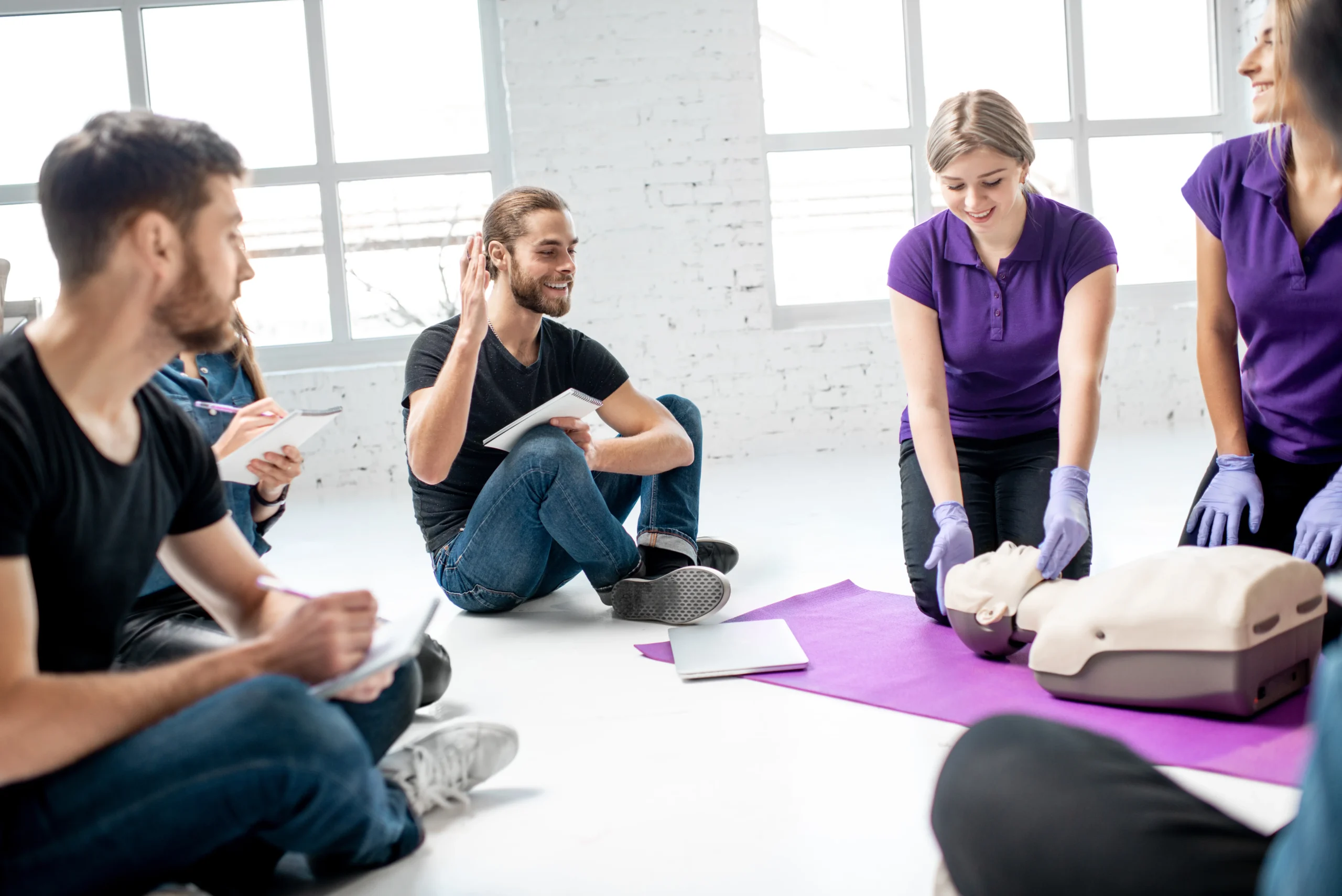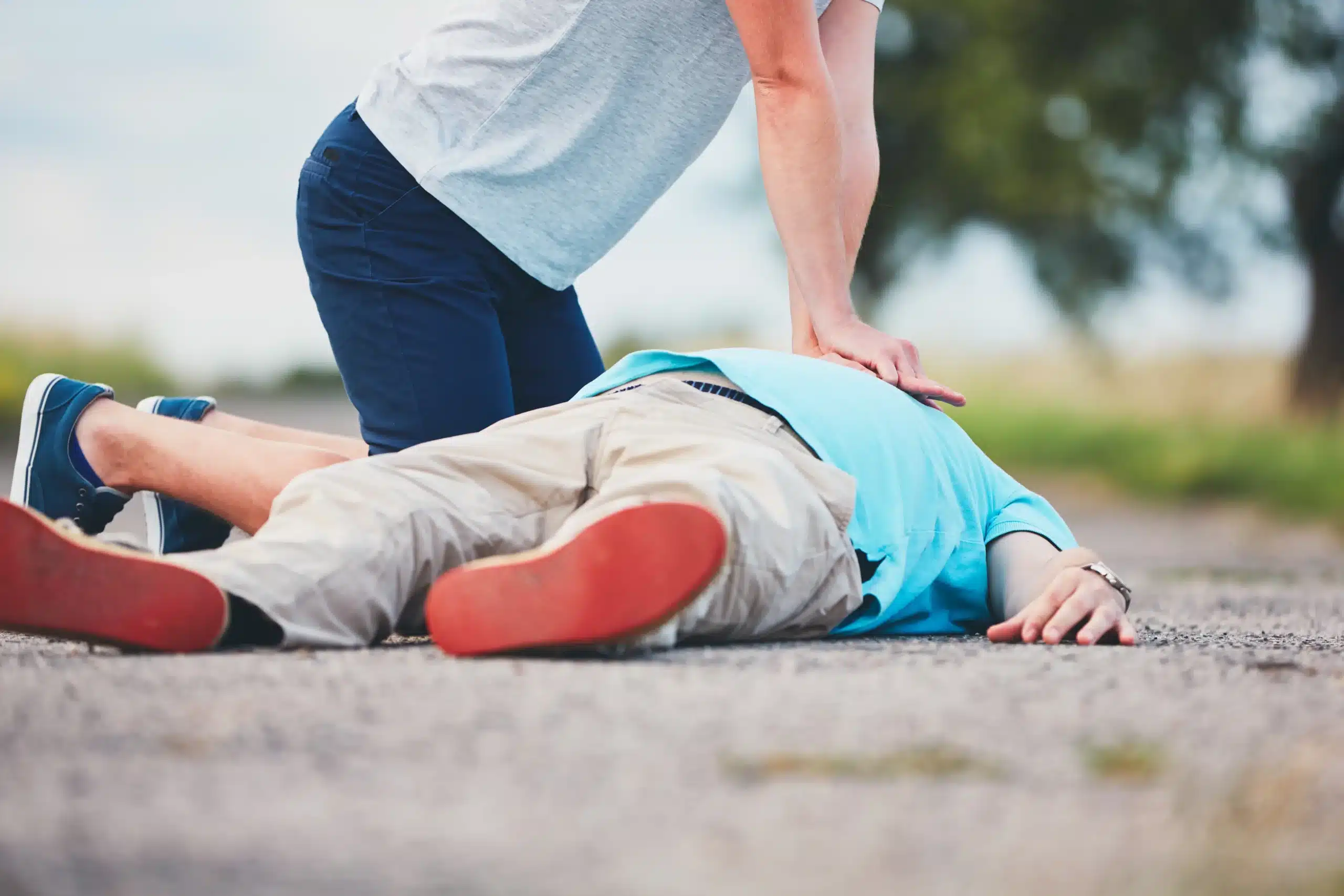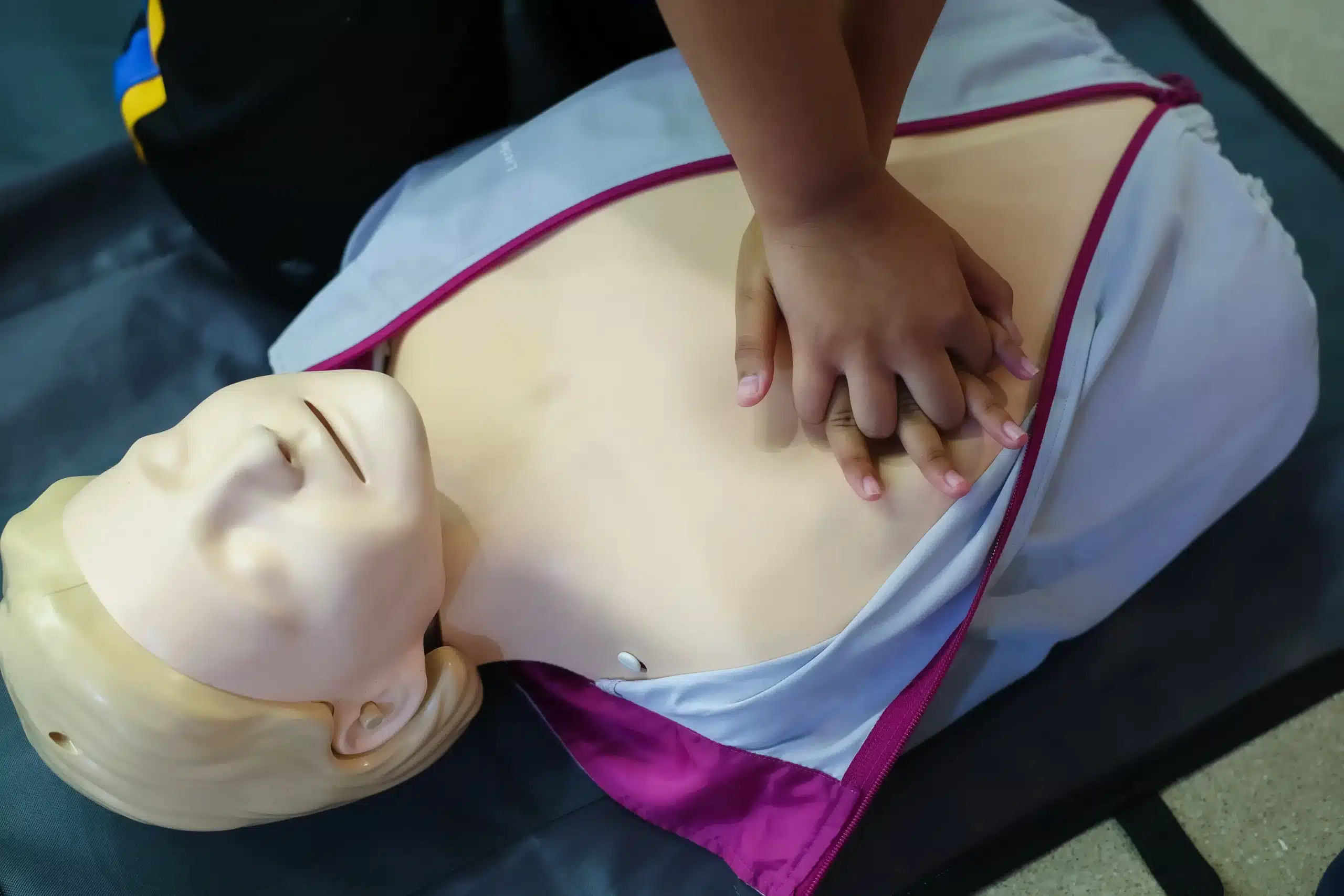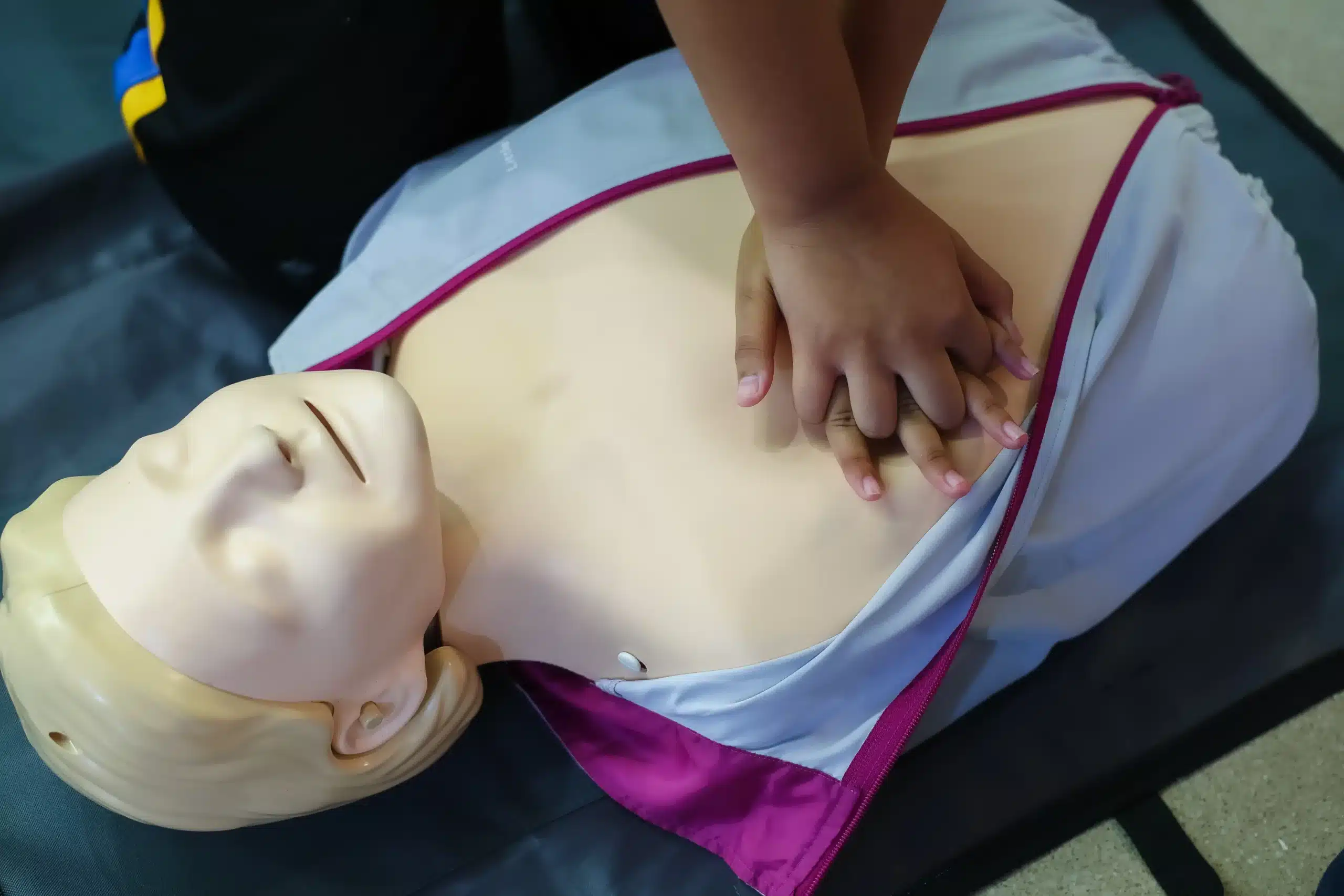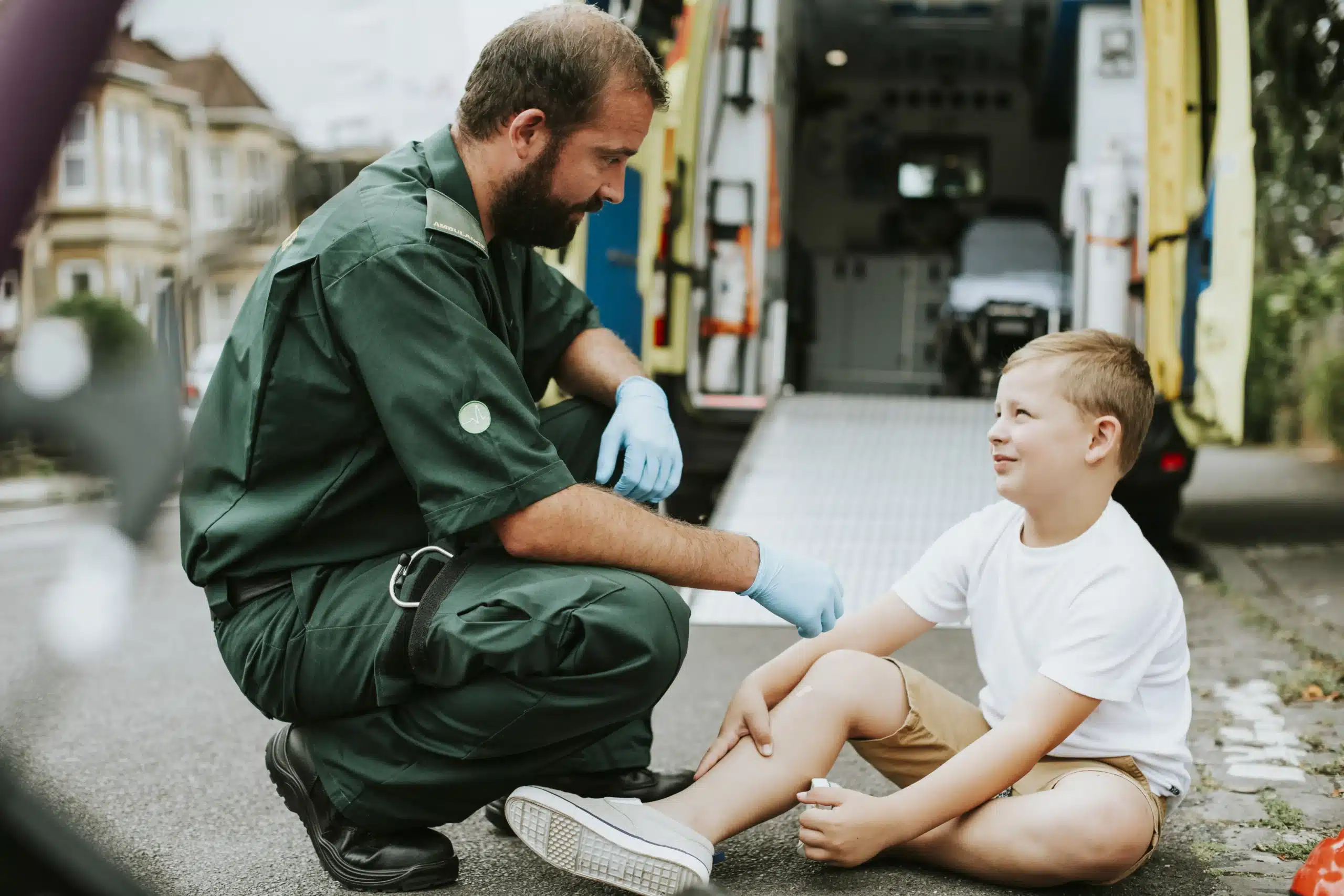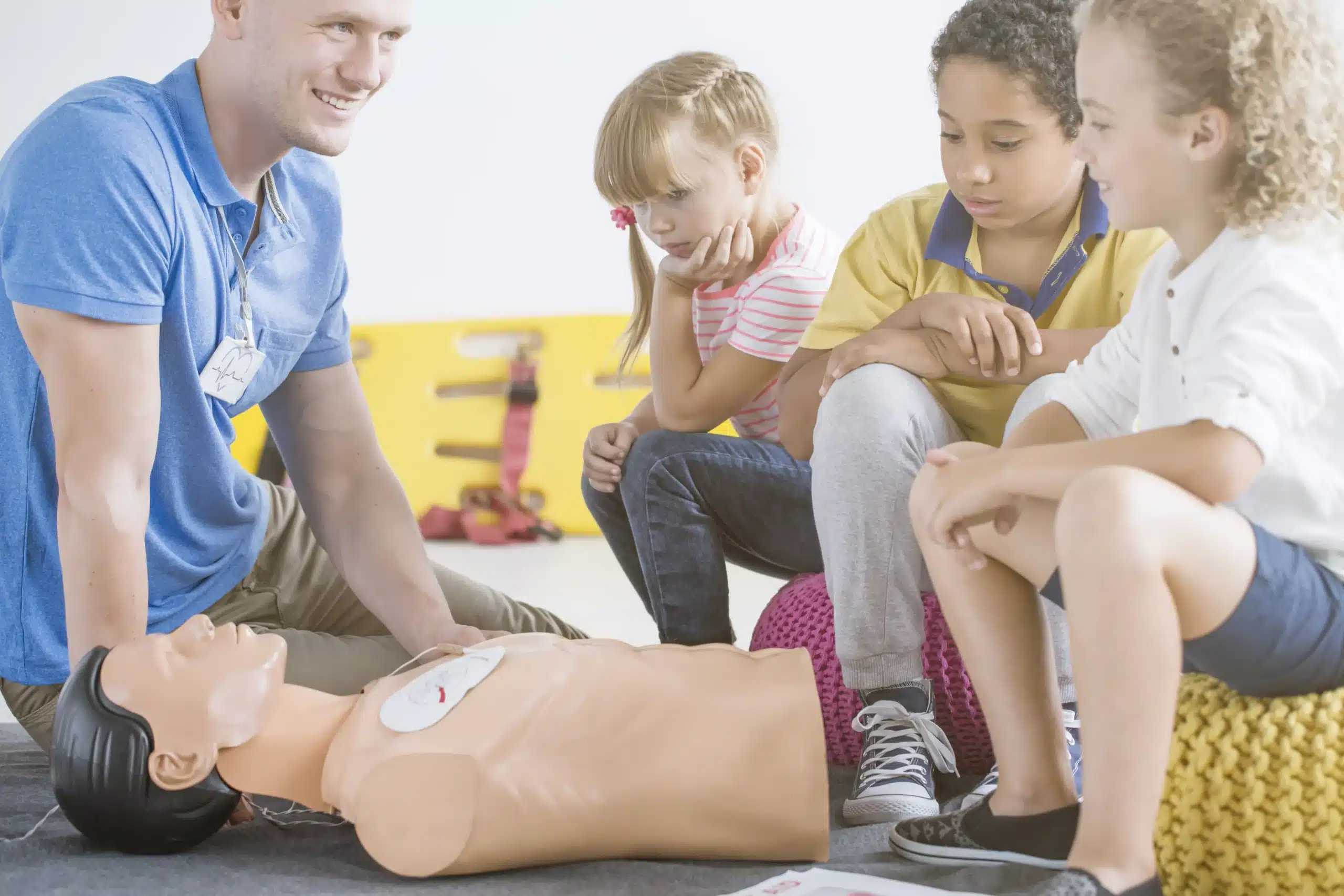Medical emergencies can happen anytime, anywhere. Being equipped with the skills to respond effectively is not just important—it can be life-saving. Basic Life Support (BLS) certification provides the training you need to assist in critical situations, giving you the confidence to act quickly and decisively. Whether you work in healthcare or simply want to be better prepared for the unexpected, BLS certification is a valuable asset. If you’re looking for “BLS certification near me,” this article will provide a comprehensive overview of BLS, including the benefits of certification, the different types of training available, and how to find the right course for your needs. We’ll also discuss the costs involved and the steps to maintain your certification.
Key Takeaways
- BLS certification empowers you to save lives: Whether you work in healthcare or not, BLS training provides the skills to respond effectively during emergencies like heart attacks, strokes, or choking. Find a course near you and become a vital link in the chain of survival.
- Finding the right BLS course involves key considerations: Think about your learning style, schedule, and budget when choosing between in-person, online, or blended learning formats. Research reputable providers and compare costs to find the best value.
- Maintaining your BLS skills is crucial for long-term preparedness: Stay current with updated guidelines and consider refresher courses to keep your skills sharp. Regular practice ensures you can confidently and effectively respond to emergencies when it matters most.
What is BLS Certification?
Basic Life Support (BLS) certification shows you know how to respond to life-threatening emergencies. It’s a vital credential for anyone in healthcare or emergency response, but it’s also valuable for teachers, coaches, and other professionals. BLS focuses on providing immediate care during cardiac arrest, respiratory distress, and choking incidents. Think of it as the foundation for saving lives. Learn more about our BLS certification.
During your BLS training, you’ll learn adult, child, and infant CPR—a core component of the certification. You’ll also become proficient with using an automated external defibrillator (AED). Because emergencies often require teamwork, BLS courses also cover the dynamics of working effectively within a resuscitation team. This means knowing your role and coordinating with others to provide the best possible care. BLS certification is typically valid for two years. After that, you’ll need recertification to stay up-to-date on the latest guidelines and techniques. This ensures you’re always prepared to deliver high-quality care in critical situations.
Why is BLS Certification Important?
BLS certification equips you with crucial skills to respond effectively during emergencies like heart attacks, strokes, and choking incidents. It’s not just for healthcare professionals—anyone committed to being prepared can benefit from BLS training. Think of it as a vital life skill, much like knowing how to change a tire or cook a basic meal. You hope you won’t need it, but when you do, it makes all the difference. Learn how to get BLS certified.
A BLS certification demonstrates you’ve received comprehensive training in both single-rescuer and team basic life support techniques. This includes CPR for adults, children, and infants, using an AED, and clearing obstructed airways. These skills can literally be the difference between life and death. If you’re ever faced with a medical emergency, having the confidence and knowledge to act quickly can dramatically improve the outcome. Explore BLS Certification information. For those already working in healthcare, maintaining your BLS certification is often a condition of continued employment and professional development. It shows you’re staying up-to-date with the latest life-saving procedures. Find out how long it takes to get BLS certified. Beyond the ability to respond to emergencies, BLS certification can enhance your career prospects. Many healthcare roles require this credential. Even in non-medical fields, having a BLS certification can make you a more valuable employee, demonstrating your commitment to safety.
Find BLS Certification Near You
Finding the right BLS certification course requires a little research, but it doesn’t have to be overwhelming. Here’s a breakdown of how to find options near you:
Online Search
Start with a simple online search. Searching for “BLS Certification near me” will pull up local results and give you a sense of what’s available in your area. Pay attention to the cost of the courses, which can range from $30 to $150 per person. This price variability means you can likely find a course that fits your budget. Look for clear information on what’s included in the course and make a note of class times and locations. Our BLS certification page offers convenient options in Petaluma, Rohnert Park, and Novato.
Local Healthcare Facilities
Hospitals, clinics, and other healthcare facilities often offer BLS certification courses. These courses are designed for healthcare providers and those in emergency response roles, but they are often open to the public as well. Check with facilities in your area to see what they offer. Getting BLS certified is a smart move, especially if you’re considering a career in healthcare. These courses usually cover both single-rescuer and team BLS skills, giving you a well-rounded understanding of basic life support.
Professional Associations
Organizations like the American Heart Association (AHA) offer standardized BLS certification courses. They’re known for their high-quality training materials and comprehensive approach. Many professional associations also offer online BLS courses, which can be a great option if you have a busy schedule or prefer to learn at your own pace. If you’re looking for other certification options, we also offer ACLS and PALS certification courses through the AHA. We also offer group discounts and have a low price guarantee.
Top BLS Certification Providers
Finding the right BLS certification provider is an important step. Several respected organizations and institutions offer high-quality training programs. Here are a few of the most recognized options:
American Heart Association
The American Heart Association (AHA) is a leading authority on cardiovascular health and CPR training. Their BLS courses are comprehensive, covering everything from basic CPR to using an AED and relieving choking. AHA certification is widely accepted and respected in the healthcare field.
American Red Cross
The American Red Cross also offers comprehensive BLS certification courses. They provide various learning formats, including in-person classes and blended learning options that combine online coursework with in-person skills sessions. Check the Red Cross website for courses near you.
Safety Training Seminars
Safety Training Seminars offers a range of CPR and BLS certification courses designed for both healthcare professionals and the general public. Serving Petaluma, Rohnert Park, and Novato, they offer the AHA BLS course with a focus on providing convenient and affordable training. Check out their website for more information.
Local Hospitals and Medical Centers
Many hospitals and medical centers offer BLS certification courses to their staff and the community. These courses are often taught by experienced healthcare professionals and provide hands-on training. Contact your local hospitals to inquire about BLS certification opportunities.
Community Colleges
Community colleges frequently offer BLS certification as part of their healthcare and continuing education programs. These courses can be a great option for students and those seeking career advancement. Check with your local community college for more information.
Choose the Right BLS Training Format
Finding the right BLS training format depends on your learning style, schedule, and budget. Let’s explore the most common options: in-person, online, and blended learning. Each has its own advantages, so consider what works best for you.
In-Person Classes
In-person BLS classes offer a structured learning environment with face-to-face interaction with a certified instructor. This format allows for real-time feedback, hands-on practice, and the opportunity to ask questions and clarify concepts immediately. You’ll work with training manikins and practice scenarios with other students, building confidence in your skills. If you thrive in a traditional classroom setting and value direct interaction, in-person training might be your best bet. Safety Training Seminars offers in-person BLS training in Petaluma, Rohnert Park, and Novato, CA. They also offer classes in over 60 cities, making it easy to find a convenient location. For businesses looking to train multiple employees, check out their group discounts.
Online Courses
Online BLS courses provide flexibility and convenience, allowing you to learn at your own pace and on your own schedule. This format is ideal for those with busy lives or limited access to in-person training locations. You’ll typically work through interactive modules, videos, and quizzes, and many programs offer virtual simulations to practice your skills. While online courses offer more freedom, it’s important to choose a reputable provider that meets American Heart Association standards. Make sure the online course includes a hands-on skills assessment component to receive your BLS certification.
Blended Learning
Blended learning combines the best of both worlds, offering the flexibility of online learning with the hands-on experience of in-person training. You’ll complete the cognitive portion of the course online at your own pace, then attend a shorter in-person skills session to practice and demonstrate your proficiency. This format is a great option for those who want the convenience of online learning but also value the personalized guidance of an instructor. The American Red Cross offers blended learning BLS programs, allowing you to tailor your learning experience to your needs. This format can also be more affordable than traditional in-person classes.
Get BLS Certified
Getting your BLS certification is a straightforward process. Here’s what you can expect:
Course Content and Duration
BLS certification courses cover essential life-saving techniques, including CPR, recognizing and responding to life-threatening emergencies like heart attacks and strokes, using an AED, and relieving choking. A typical BLS course takes four to five hours to complete, including the exam. Some courses offer a blended learning format where you complete online modules before attending an in-person skills session. This can be a convenient option if you have a busy schedule. Check with your chosen provider to see what format options they offer.
Skills Assessments and Exams
BLS courses involve both knowledge assessments and skills demonstrations. You’ll likely encounter multiple-choice questions on the exam covering the course material. The skills session requires you to demonstrate proficiency in performing CPR, using an AED, and other essential BLS skills. Passing both the written exam and the skills assessment is required for certification. Safety Training Seminars offers comprehensive training and assessment to prepare you for these requirements.
Certification Validity and Renewal
Your BLS certification will typically be valid for two years. To maintain your credentials and stay up-to-date with the latest guidelines, you’ll need to renew your certification every two years. This involves retaking the course and passing the exam. Plan and schedule your renewal course before your current certification expires.
BLS Certification Costs
Getting BLS certified is an investment in your skills and ability to respond to emergencies. Let’s break down the typical costs associated with BLS certification and explore ways to find the best value.
Average Pricing
The cost of BLS certification varies depending on several factors. Location, the training provider, and the type of certification all play a role. Generally, you can expect to pay anywhere from $30 to $150 per person. Safety Training Seminars offers a low-price guarantee, ensuring you receive competitive pricing for your training. Remember, the cheapest option isn’t always the best. Look for a balance of affordability and high-quality instruction.
Group Discounts and Promotions
If you’re training with a group, such as coworkers or a community organization, inquire about group discounts. Many providers, including Safety Training Seminars, offer reduced rates for group bookings. Keep an eye out for promotions. Occasionally, training providers will run special offers or provide promo codes that can lower the cost of your certification.
Recertification Costs
Your BLS certification will need to be renewed regularly, typically every two years. The cost of recertification is usually less than the initial certification. Some providers offer online recertification courses, which can be a convenient and cost-effective way to renew your credentials. Factor in the cost of recertification when planning your training budget. It’s a good idea to check with your provider about their recertification policies and pricing.
BLS vs. CPR vs. ACLS
When it comes to life-saving techniques, understanding the differences between BLS, CPR, and ACLS is crucial for choosing the right course. Let’s break down each one:
Basic Life Support (BLS) certification is designed for healthcare professionals, like doctors, nurses, and paramedics. It covers a wider range of skills than CPR, including single-rescuer and team basic life support, how to use an Automated External Defibrillator (AED), and recognizing life-threatening emergencies. BLS providers are prepared to handle cardiac arrest and other emergencies in professional settings. Think of BLS as the comprehensive package for healthcare providers.
Cardiopulmonary Resuscitation (CPR) training teaches the fundamentals of chest compressions and rescue breaths. It’s a vital skill for anyone, not just healthcare workers. CPR can be learned through various organizations, including the American Red Cross, and focuses on immediate response to someone whose heart has stopped. While CPR is a core part of BLS, it’s more streamlined and accessible to the public. It empowers anyone to provide immediate assistance in a crisis.
Advanced Cardiac Life Support (ACLS) goes a step further than BLS. It’s designed for healthcare providers who manage cardiopulmonary arrest and other serious cardiovascular emergencies. ACLS covers advanced interventions, including medication administration and team dynamics, making it essential for critical care situations. It builds upon the skills learned in BLS, adding another layer of expertise. ACLS providers are equipped to handle complex cardiac emergencies in critical care settings.
Prepare for BLS Certification
Getting ready for your BLS certification is straightforward. It mostly involves understanding the process, gathering your materials, and knowing what to expect during training. A little preparation helps ensure you’re ready to learn these lifesaving skills.
Prerequisites and Study Materials
There aren’t any strict prerequisites for BLS courses. They’re designed to be accessible to everyone—from healthcare providers to everyday people who want to learn these essential skills. While some people buy a BLS provider manual beforehand, it’s often included in your course fee. Check with your chosen provider, like Safety Training Seminars, to see what materials they provide. If you think you’ll need other certifications like ACLS and PALS, look into bundling them with your BLS course to save money. And remember, a BLS certification is typically valid for two years, so keep that in mind as you plan.
What to Expect During Training
A typical BLS course takes about four to five hours, including the exam. The format will depend on whether you choose in-person, online, or blended learning. With blended or online BLS courses, you’ll usually complete online modules before a shorter in-person skills session. These in-person sessions typically run about four hours and give you a chance to practice and demonstrate the techniques you learned online. For traditional in-person classes, expect all four to five hours to be instructor-led in a classroom setting. No matter the format, be prepared for hands-on practice, interactive discussions, and a final skills assessment to make sure you know your BLS techniques.
Maintain Your BLS Certification
Once you’ve earned your BLS certification, staying current is key. Knowing how and when to recertify ensures you’re always prepared to provide effective, high-quality care. This section covers everything you need to know about maintaining your BLS skills and knowledge.
Stay Current with Guidelines
BLS guidelines are updated periodically to reflect the latest scientific research and best practices in resuscitation. A BLS certificate typically lasts for two years. Keep track of your certification’s expiration date to stay compliant and ensure your skills are up-to-date. Set a reminder a few months before your certification expires so you have plenty of time to recertify. Regularly reviewing the latest guidelines, even before your renewal is due, can also be beneficial. Staying informed about any changes will help you maintain the highest standard of care.
Continuing Education Opportunities
Even if your certification isn’t due for renewal, there are many ways to enhance your BLS skills. Consider taking refresher courses or attending workshops focused on specific aspects of BLS, such as high-quality CPR or effective ventilation techniques. These opportunities not only reinforce your existing knowledge but also introduce you to any new developments in the field. Many healthcare providers find it helpful to integrate BLS practice into their regular routines. This could involve practicing with colleagues, using online simulations, or reviewing case studies. Regular practice helps maintain muscle memory and keeps your skills sharp so you can respond confidently in an emergency. Staying proactive about your BLS education demonstrates your commitment to providing the best possible care and ensures you’re always ready to respond effectively.
Related Articles
- Find BLS Classes Near Me: Your AHA Certification Guide – Petaluma CPR Classes
- BLS Training Near Me: A Practical Guide – Petaluma CPR Classes
- BLS Renewal in Novato: Your Complete Guide – Petaluma CPR Classes
- Advanced Cardiac Life Support (ACLS), Rohnert Park
- Online ACLS Classes in Petaluma: Your Complete Guide – Petaluma CPR Classes
Frequently Asked Questions
How long does BLS certification last? BLS certification is typically valid for two years, after which you’ll need to recertify.
What’s the difference between BLS and CPR? CPR (Cardiopulmonary Resuscitation) focuses on chest compressions and rescue breaths. BLS (Basic Life Support) encompasses CPR but also includes AED use and other skills for healthcare providers. It’s a broader certification.
What does a BLS course cover? BLS courses cover adult, child, and infant CPR, AED use, airway management, and the principles of team resuscitation. You’ll learn how to recognize and respond to life-threatening emergencies like heart attacks and strokes.
Where can I find BLS certification courses near me? You can find BLS courses through the American Heart Association, the American Red Cross, local hospitals, community colleges, and training providers like Safety Training Seminars. Online searches are a great way to find local options.
How much does BLS certification cost? The cost of BLS certification varies but typically ranges from $30 to $150. Look for providers offering group discounts or promotions to save on costs. Safety Training Seminars offers a low-price guarantee.

